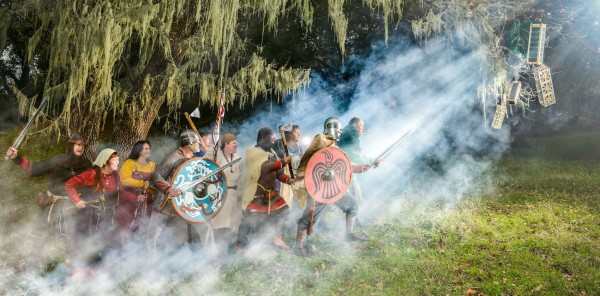The Truth Be Told
For over four years many on the left have wondered, sometimes aloud,
when President Obama would abandon diplomacy and desire for
bipartisanship and tell the American people what they need to hear about
why they are not sharing in the nation’s economic recovery that is
enriching the wealthy and their corporations. Whether it was to appease repugicans to encourage them to work with Democrats for the good of all
the people, or to avoid appearing combative, the President has been
remiss to speak bluntly about why Washington is ineffective when he, and
anyone with a pulse, knew repugican obstruction was borne of their
opposition to him as President as much as their 30-year crusade to
transfer the nation’s wealth to their corporate paymasters. However, in
an
interview
with the New York Times, the President gave an accurate assessment of
the repugican cabal, the state of the economy, and reiterated his
four-year economic agenda that repugicans have opposed every step of
the way.
The President did not reveal any new initiatives to boost the economy
he has not already shared during two campaigns for the presidency, but
he finally called for a cessation of the repugican’s austerity frenzy
that is retarding economic growth, killing millions of jobs, and sending
more Americans into poverty. In fact, the President accurately cited
the devastating effects of austerity he called “
a damaging framework in Washington.” He said, “
I
want to make sure that all of us in Washington are investing as much
time, as much energy, as much debate on how we grow the economy and grow
the middle class as we’ve spent over the last two to three years
arguing about how we reduce the deficits.” Instead of slashing
spending on social safety nets and domestic programs, the President
called for spending on education, research and development, clean
energy, and infrastructure that repugicans claim depresses economic
recovery because it does not shift all the wealth to their campaign
donors fast enough.
Widening income inequality in favor of the rich, the repugicans
primary goal, is one of the President’s main economic concerns and he
noted it is “
fraying the country’s social fabric and undermined Americans’ belief in opportunity.” He said that the concept, once a reality, of upward mobility was “
part and parcel of who we are as Americans,” but that it has been eroding “
over the last 20, 30 years, well before the financial crisis.”
It was the first time in recent memory anyone in Washington openly
acknowledged that since the Reagan junta, repugicans worked
tirelessly to transfer the nation’s wealth directly to the rich. In a
direct swipe at repugican intransigence and austerity to benefit the
wealthy, the President said “
If we don’t do anything, then growth
will be slower than it should be. Unemployment will not go down as fast
as it should, and income inequality will continue to rise; that’s not a
future that we should accept” and cited the effect income inequality has on racial tensions plaguing America.
The President explained how the repugican economic agenda,
particularly opposition to job creation, promoting austerity to create
poverty, and refusal to invest in America to enrich the wealthy
contributes to racial strains that are inexorably linked to people’s
fear that financial stability is unattainable. He said that as long as “
people feel they’ve got to compete with some other group to get scraps from a shrinking pot,”
there will be racial animus that extends to immigrants, Hispanic
Americans, and African Americans. The solution, the President said, is
that “
if the economy is growing, everybody feels invested. Everybody feels as if we’re rolling in the same direction,” but a nation working toward the same goals is anathema to Republicans who thrive on divisiveness and creating suspicion of “
the other”
whether it is African Americans, Hispanics, or the President of the
United States. In fact, maybe for the first time in his Presidency,
Obama noted that repugican opposition to sound economic policies that
are proven to grow the economy, create jobs, and contribute to national
unity is based on the fact he was elected President.
In highlighting the constant repugican criticism that he usurps his
authority in calling for and supporting legislation to invest in
America, spur job creation, grow the economy, and reduce crippling
income inequality, Mr. Obama said “
there’s not an action that I take
that you don’t have some folks in Congress who say that I’m usurping my
authority. Some of those folks think I usurp my authority by having the
gall to win the presidency.” The President may not realize the
importance of that one statement, but it encapsulates the entirety of repugican opposition to everything he has proposed or supported
throughout his tenure regardless it is jobs bills, gun safety, gay
rights, women’s rights, or tax hikes on the richest Americans.
Republican denial that he is the legally elected President is also a
major contributing factor to the racial animus raging in conservative
ranks that is impeding immigration reform as well as driving repugican
success at assaulting minority voting rights in repugican cabal-controlled states.
If the American people take anything away from the President’s
remarks in the NYT interview, and recent speeches about the economy, it
is that it appears he has had it with repugicans and the devastation
they have caused this nation over the past two-and-a-half years. It is
true repugicans have been on a thirty year crusade to transfer wealth
to their wealthy campaign donors and install a theocracy to control
American society, but they have taken extraordinarily extreme measures
since they took control of the House and several states in the 2010
midterm elections. Their obvious denial that he won the presidency twice
is evident in their opposition to policies and agendas the President,
the majority of Americans, and even repugicans support, and their
continued push, and threats to continue, austerity in spite of the
devastation to the economy and American people is evidence they have no
regard for the health of the nation. Now, at long last, President Obama
is taking up the cause of the people like never before by openly calling
out repugicans as the source of America’s economic and social woes.
The repugicans can never say the President did not make every attempt to
compromise with them (but they will), or that he failed to slash the debt and deficit,
or that he did not save the economy after they ravaged it with tax cuts
for the rich, two unnecessary wars, and rampant deregulation during the shrub junta. However, it appears they have pushed the President too far and
punished the people too severely, because he is finally speaking
honestly against repugicans’ damage to Americans, the economy, and the
social fabric and calling for an end to austerity and income inequality
driving American racism.











 Once
upon a time, people suffered from vitamin deficiencies which caused
anemia, rickets, and other conditions we rarely hear about anymore. The
truth is, the average modern American diet has the vitamins we need.
However, half of all Americans take vitamin supplements. Research shows
that they aren't necessary, and can actually shorten our lives. An
article at the Atlantic cites many studies on vitamin supplements and
their effects, but also contains the fascinating story of how we became
so enamored with vitamin supplements. All it took was one man advocating
their use, because that one man was the esteemed scientist and Nobel
laureate Linus Pauling.
Once
upon a time, people suffered from vitamin deficiencies which caused
anemia, rickets, and other conditions we rarely hear about anymore. The
truth is, the average modern American diet has the vitamins we need.
However, half of all Americans take vitamin supplements. Research shows
that they aren't necessary, and can actually shorten our lives. An
article at the Atlantic cites many studies on vitamin supplements and
their effects, but also contains the fascinating story of how we became
so enamored with vitamin supplements. All it took was one man advocating
their use, because that one man was the esteemed scientist and Nobel
laureate Linus Pauling. 




 You may remember that two weeks ago, an Asiana airliner crashed in San Francisco. Local news station KTVU gave the flight crew
You may remember that two weeks ago, an Asiana airliner crashed in San Francisco. Local news station KTVU gave the flight crew


















